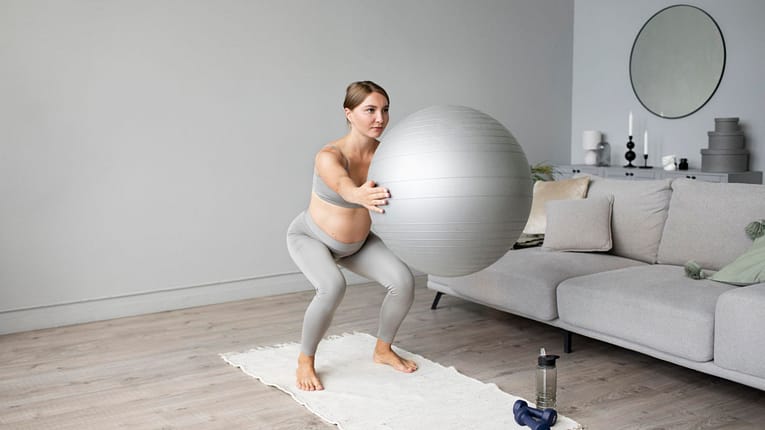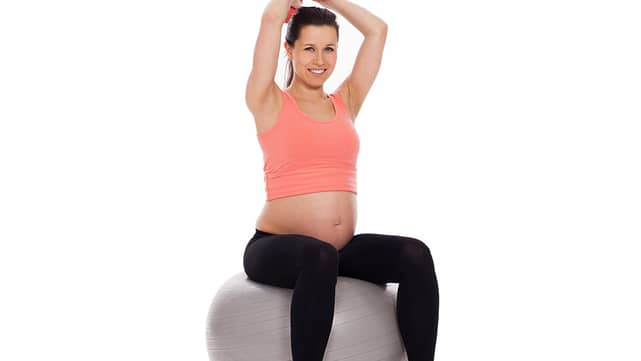
Table of Contents
ToggleUnderstanding Squats during Pregnancy: What Are Squats?
Squats are a fundamental exercise involving the movement of the hips, knees, and ankles while lowering the body down and then returning to a standing position. They engage various muscle groups, including the quadriceps, hamstrings, glutes, and core muscles.
Benefits of Squats
For non-pregnant individuals, squats are often praised for their ability to strengthen lower body muscles, enhance flexibility, and improve overall body strength. During pregnancy, these benefits can be advantageous in preparing the body for labor and delivery.
Squats and Pregnancy: The Pros and Cons: Benefits During Pregnancy
Strength and Stability: Properly executed squats can help strengthen the muscles necessary for supporting the added weight during pregnancy, potentially easing discomfort.
Preparation for Labor: Squats may aid in increasing pelvic flexibility, which might assist during labor and delivery.
Considerations and Caution
Consultation is Key: Before beginning any exercise regimen during pregnancy, it’s essential to consult with a healthcare professional. They can provide personalized advice based on the individual’s health status and pregnancy progression.
Risk of Overexertion: As the body changes during pregnancy, the hormone relaxin increases, loosening ligaments. This heightened flexibility may increase the risk of injury if exercises like squats are not performed with proper form and moderation.
Squats in the First Six Months of Pregnancy
The first six months mark a crucial phase of fetal development. Here, the body undergoes significant changes, making it crucial to approach exercise with care.
Expert Insights and Recommendations
Medical Clearance: Generally, if a woman was regularly performing squats before pregnancy and has received medical clearance, continuing these exercises within reasonable limits might be considered safe.
Adjustments and Modifications: As pregnancy progresses, modifications to the squatting technique may be necessary. These might include reducing the depth of the squat, using support, or avoiding certain positions to ensure safety.
So.
Squats can be a valuable exercise during pregnancy, offering benefits such as improved strength and potential preparation for labor. However, caution, moderation, and professional guidance are essential. Always consult with a healthcare provider before initiating any exercise routine, especially during pregnancy. With their guidance, squats might be safely incorporated, ensuring the health and well-being of both the mother and the baby.
Remember, every pregnancy is unique. Always prioritize safety and seek personalized advice when considering exercise routines during this special time.
Addressing Concerns in the First Six Months
Understanding Physical Changes
During the initial six months of pregnancy, the body undergoes substantial physical changes. The uterus expands to accommodate the growing fetus, leading to shifts in the center of gravity and potential strain on the back and pelvic region. Engaging in exercises like squats should consider these changes.

Potential Benefits in Early Pregnancy
Muscle Strengthening: Squats, when performed correctly and under supervision, can aid in strengthening the muscles required for better posture and support as the body adapts to pregnancy.
Preparation for Labour: Early incorporation of controlled and modified squats might help in maintaining pelvic flexibility, potentially easing labor pains and enhancing delivery outcomes.
Precautions and Modifications
Listen to Your Body: Pay close attention to your body’s cues. If discomfort, pain, or dizziness arises during squats, it’s essential to stop immediately and consult with your healthcare provider.
Proper Technique: Ensure proper form during squats. Avoid deep or heavy squats that could strain the back or pelvic area. Consider using support, like a chair or wall, for stability.
Professional Advice and Personalization
Every pregnancy is unique, and what might work for one woman might not suit another. Seeking guidance from a healthcare professional, specifically one knowledgeable in prenatal care and exercises, is crucial. They can provide tailored recommendations based on your health status and pregnancy progression.
Conclusion: A Balanced Approach
While squats can offer potential benefits in the first six months of pregnancy, a balanced approach is key. Considering safety, moderation, and individual suitability are fundamental. Consulting with healthcare providers ensures that exercises like squats are incorporated safely, promoting overall well-being during pregnancy.
External Resources For further understanding of exercises during the initial phase of pregnancy, explore these resources:
The Bump – The Best Pregnancy Workouts for the First Trimester – Provides insights into safe exercises during the first trimester.
Healthline – Exercise During Pregnancy: What You Can Do in the First Trimester – Offers guidance on safe exercise routines during early pregnancy.
Parents.com – First Trimester Pregnancy Exercises – Discusses exercises suitable for the initial months of pregnancy, including considerations and modifications.
American Pregnancy Association – Exercise During Pregnancy – Provides comprehensive guidelines on safe exercises during pregnancy.
Mayo Clinic – Pregnancy and Exercise: Baby, Let’s Move! – Offers insights into exercise benefits and precautions during pregnancy.
What to Expect – The Best Exercises for Pregnant Women – Highlights safe and effective exercises for pregnant women, including considerations for different trimesters.
Remember, the key to a healthy pregnancy is maintaining open communication with healthcare professionals and prioritizing safety while considering exercise routines. Always seek personalized advice and enjoy this beautiful journey with care and mindfulness.
Comparison tabular
Here’s a comparison table summarizing the key points regarding squats during pregnancy in the first six months:
| Aspect | Benefits | Considerations |
|---|---|---|
| Understanding Squats | Strengthen lower body muscles; improve flexibility | Ensure proper form and moderation |
| Benefits During Pregnancy | Strength and stability; preparation for labor | Risk of overexertion due to increased flexibility |
| First Six Months | Strengthen muscles; potential preparation for labor | Consider physical changes and adjust technique accordingly |
| Precautions | Listen to body; stop if discomfort arises | Avoid deep or heavy squats that strain the back or pelvis |
| Professional Advice | Seek guidance; consult healthcare provider | Personalized recommendations based on individual pregnancy |
This table provides a concise overview of the benefits, considerations, and precautions associated with performing squats during the first six months of pregnancy, highlighting the need for moderation, proper technique, and personalized advice from healthcare professionals.
Wrapping up
In the journey of pregnancy, staying active and healthy is essential, but it’s equally important to approach exercise, like squats, with care and consideration. While squats offer potential benefits in strengthening muscles and preparing for labor, they come with cautions and the necessity for adjustments as the body undergoes significant changes.
Remember, your body is unique, and what works for one might not suit another. Prioritize safety, listen to your body, and always consult with healthcare providers before embarking on any exercise routine during pregnancy.
The key is finding a balance that ensures your well-being and that of your baby. With proper guidance, moderation, and attention to your body’s signals, incorporating exercises like squats can be a part of a healthy and fulfilling pregnancy journey. Embrace this transformative time with care, mindfulness, and the support of healthcare professionals to make it truly remarkable.

Hey there, it’s Mike Rrsq, the Editor-in-Chief over at Jsquat.com, and I’m absolutely obsessed with all things squat fitness! I’ve been lucky enough to get some serious recognition for my work in this field. With a solid background in the fitness and wellness industry, I’ve been there right from the get-go, helping shape this website into what it is today.
You see, I’m not just the boss around here; I’m also a passionate contributor. I love sharing my insights through my articles, and trust me, they’re not your run-of-the-mill stuff. Each piece I write is a labor of love, filled with my expertise and real-world experience in the fitness universe. So, if you’re into fitness and looking for some inspiration, you’re in the right place!
Related Posts
- Dealing with Shaky Knees and Buckling During Squats: Tips and Solutions
Are your knees shaking and buckling when you try to squat? Don't worry; you're not…
- Is Heel Raising During Squats a Problem?
Hey there, fitness enthusiasts! Are you a fan of squats but find yourself struggling with…
- How do you Convince your boyfriend to use a spotter during intense back squats
You care about your boyfriend's safety and well-being during his workouts, especially when tackling heavy…
- Discomfort during pistol squats: are legs too weak, or should You stop with the exercise
If you've ever tried pistol squats, you know that they are a challenging and…
- Why do you get headache and feel like vomiting during squats and leg press
For many fitness enthusiasts, the sensation of nausea or headaches after intense lower-body exercises like…
- Couldn't mental focus help reduce leg shaking during squats?
When it comes to squats, maintaining stability is the cornerstone of an effective and safe…
- Struggling to Catch Your Breath During Squats? Here's What to Do!
Hey there, fitness enthusiasts! Ever found yourself huffing and puffing while attempting squats? Don't sweat…
- Are Hack Squats As Good As Squats (Explained)
Are hack squats the real deal or just a pale imitation of the classic squat?…

